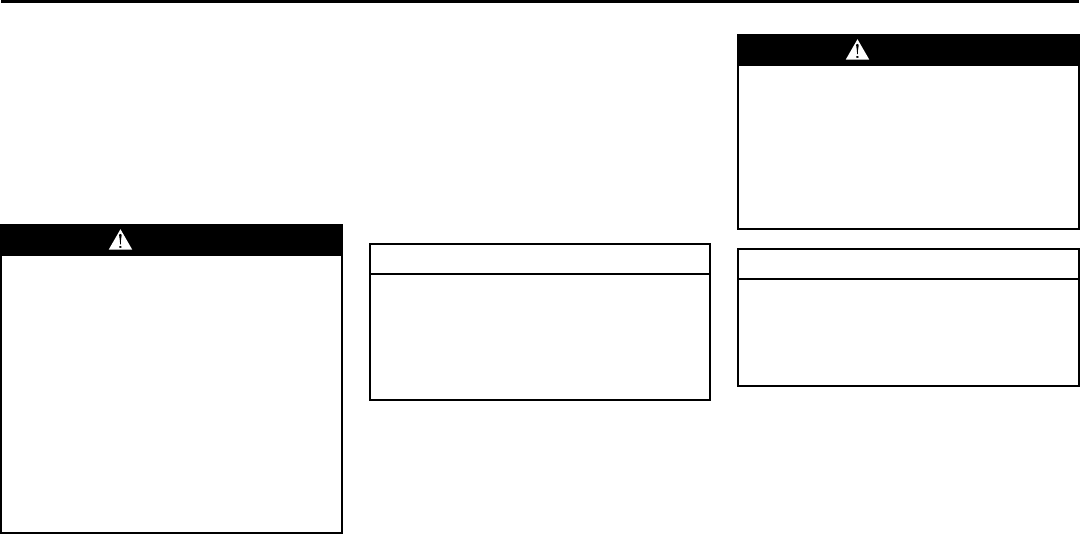
2-14
FEATURES AND CONTROLS
85Z04-03E
by blocking the straight movement of the
shift lever when the vehicle is moving.
PARK (P):
This position locks your front wheels. It’s
the best position to use when you start
your engine because your vehicle can’t
move easily. Also, this is the only position
from which you can remove the key after
turning it to LOCK.
Ensure the shift lever is fully in PARK (P)
before starting the engine. Your vehicle
has an automatic transmission shift lock
control system. You have to apply your reg-
ular brakes before you can shift from PARK
(P) when the ignition is in the ON position.
If you cannot shift out of PARK (P), ease
pressure on the shift lever – push the shift
lever all the way into PARK (P) – as you
maintain brake application. Then move the
shift lever into the gear you wish. See
“Shifting Out of Park (P)” on a later page in
this section.
REVERSE (R):
Use this gear to back up. In order to move
from NEUTRAL (N) to REVERSE (R), you
must press down on the shift lever while
shifting.
To rock your vehicle back and forth to get
out of snow, ice or sand without damaging
your transmission, see “If You Are Stuck: In
Sand, Mud, Ice or Snow” in section 4.
NEUTRAL (N):
In this position, your engine doesn’t con-
nect with the wheels. To restart when
you’re already moving, use NEUTRAL (N)
only. Also, use NEUTRAL (N) when your
vehicle is being towed.
AUTOMATIC OVERDRIVE (D):
This position is for normal driving.
THIRD (3):
This position is also used for normal driv-
ing, however, it offers more power and
lower fuel economy than AUTOMATIC
OVERDRIVE (D). Here are some times
you might choose THIRD (3) instead of
AUTOMATIC OVERDRIVE (D):
• When driving on hilly, winding roads.
• When doing down a steep hill.
WARNING
It is dangerous to get out of your
vehicle if the shift lever is not fully in
PARK (P) with the parking brake
firmly set. Your vehicle can roll.
Don’t leave your vehicle when the
engine is running unless you have to.
If you have left the engine running,
the vehicle can move suddenly. You
or others could be injured. To be sure
your vehicle won’t move, even when
you’re on fairly level ground, always
set your parking brake and move the
shift lever to PARK (P). See “Shifting
Into Park (P)” in the Index.
CAUTION
Shifting to REVERSE (R) while your
vehicle is moving forward could dam-
age your transmission. The repairs
would not be covered by your war-
ranty. Shift to REVERSE (R) only after
your vehicle is stopped.
WARNING
Shifting into a drive gear while your
engine is “racing” (running at high
speed) is dangerous. Unless your
foot is firmly on the brake pedal, your
vehicle could move very rapidly. You
could lose control and hit people or
objects. Don’t shift into a drive gear
while your engine is racing.
CAUTION
Damage to your transmission caused
by shifting into a drive gear with the
engine racing isn’t covered by your
warranty. Be sure the engine is not
racing when shifting your vehicle.
Starting and Operating Your Vehicle:


















